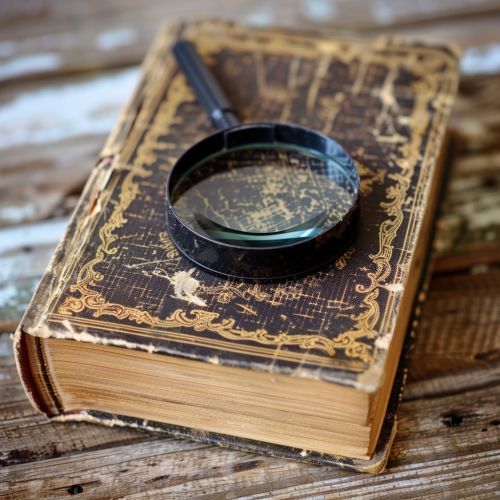Detective Fiction
Origins and Development
Detective fiction is a sub-genre of crime fiction and mystery fiction in which an investigator or a detective—either professional, amateur or retired—investigates a crime, often murder. The detective genre began around the same time as speculative fiction and other genre fiction in the mid-nineteenth century.


The earliest known example of a detective story was "The Three Apples", one of the tales narrated by Scheherazade in the One Thousand and One Nights ('Arabian Nights'). In this story, a fisherman discovers a heavy, locked chest along the Tigris river and he sells it to the Abbasid Caliph, Harun al-Rashid, who then has the chest broken open only to find inside it the dead body of a young woman who was cut into pieces. Harun orders his vizier, Ja'far ibn Yahya, to solve the crime and find the murderer within three days, or be executed if he fails his assignment. This forms the central plot device of the story, with Ja'far appearing as the proto-detective.
The development of detective fiction was led by the British author Sir Arthur Conan Doyle, who created the character Sherlock Holmes for his detective stories. Holmes' careful analytical mind is contrasted with the more traditional action-oriented detectives, establishing a template for many future detectives in literature.
Characteristics of Detective Fiction
Detective fiction is characterized by specific, distinctive, structural and stylistic criteria. It is usually distinguished from mainstream fiction and other genres such as science fiction or historical fiction, but boundaries can be, and indeed are, blurred. It is often argued that the first detective story was "The Murders in the Rue Morgue" by Edgar Allan Poe, featuring the detective C. Auguste Dupin.
The detective in detective fiction is an investigator, either a professional or an amateur, who solves crimes like murders. The detective studies the intriguing reasons and events leading to the crime, and analyses the information provided by the witnesses and clues provided by others related to the crime. The detective conducts the investigation methodically, by reviewing the evidence and forming an idea of the perpetrator's identity, modus operandi, and the reasons for committing the crime.
Sub-genres of Detective Fiction
Detective fiction has several sub-genres, including the 'whodunit', the 'hard-boiled' detective and the 'police procedural' novel.
The 'whodunit' detective story is a complex, plot-driven variety of the detective story in which the audience is given the opportunity to engage in the same process of deduction as the protagonist. The classic whodunit writer was the British author Agatha Christie, whose works include Murder on the Orient Express and And Then There Were None.
The 'hard-boiled' detective story, a distinctly American evolution of the detective genre, was born from the pulp magazines of the early 20th century. The hard-boiled detective story features a gritty, urban setting, unsentimental, violent stories, and a detective hero who is often cynical and always tough. The most famous hard-boiled detective is Philip Marlowe, created by Raymond Chandler.
The 'police procedural' novel is a detective story that attempts to convincingly depict the activities of a police force as they investigate crimes. The police procedural often features a large cast of characters and focuses on the squad of detectives working to solve a crime.
Impact on Popular Culture
Detective fiction has had a significant impact on popular culture, influencing film, television, and video games. The detective genre has become a staple of major film studios and detective stories are regularly featured in the plotlines of many TV dramas. Video games also use detective story elements to drive their plots.
